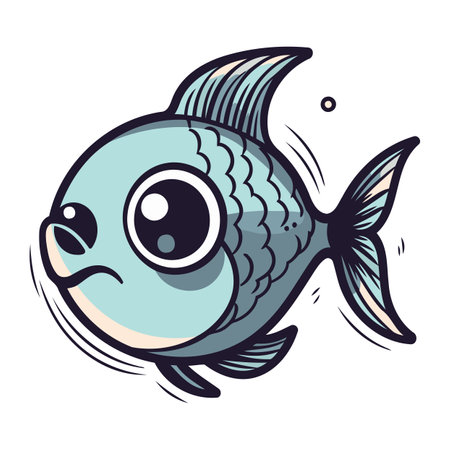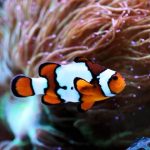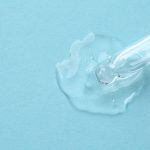1. Understanding the Importance of Tank Size
Choosing the right tank size is one of the most important decisions you’ll make when setting up an aquarium. The size of your fish tank directly impacts the health, behavior, and longevity of your fish. A properly sized tank helps maintain stable water conditions, reduces stress, and provides ample space for your fish to swim and thrive.
Why Tank Size Matters
A common mistake many beginners make is starting with a tank that is too small. Small tanks can lead to several issues, including rapid waste buildup, poor water quality, and increased stress on fish. On the other hand, a properly sized tank creates a balanced environment where fish can grow and live comfortably.
Effects of Inadequate Tank Size
| Issue | Effect on Fish |
|---|---|
| Poor Water Quality | Toxins like ammonia and nitrites build up quickly in small tanks. |
| Lack of Swimming Space | Fish may become stressed, aggressive, or develop deformities. |
| Oxygen Deficiency | A smaller surface area means less oxygen exchange, leading to suffocation risks. |
| Difficult Temperature Control | Small tanks experience rapid temperature fluctuations, which can be harmful. |
The Relationship Between Tank Size and Fish Growth
The myth that fish only grow to the size of their tank is misleading. While limited space can stunt growth, it often leads to health problems rather than naturally adjusting a fish’s size. Providing a spacious environment ensures your fish reach their full potential in both size and lifespan.
Bigger Tanks Are Easier to Maintain
A larger tank is generally easier to maintain than a smaller one. Larger water volumes dilute toxins more effectively and provide more stability in terms of temperature and water chemistry. This makes it easier to keep your fish healthy with fewer drastic changes in water conditions.
The Right Start for a Healthy Aquarium
Selecting an appropriately sized tank from the beginning sets the foundation for a successful aquarium. It not only improves the well-being of your fish but also makes maintenance easier for you as an owner. Understanding why tank size matters will help you make informed decisions as you set up your aquarium.
2. Factors to Consider When Choosing a Tank Size
Picking the right tank size for your fish isnt just about aesthetics—it directly impacts their health and happiness. Several key factors influence the ideal tank size, including fish species, growth potential, social behaviors, and water quality. Lets dive into these important considerations.
Fish Species and Size
Different fish species have varying space requirements. Some are small and do well in compact tanks, while others need plenty of room to swim freely. Here’s a quick reference for common aquarium fish:
| Fish Species | Minimum Tank Size |
|---|---|
| Betta Fish | 5 gallons |
| Goldfish | 20 gallons (for one), +10 gallons per additional goldfish |
| Neon Tetra | 10 gallons (for a small school) |
| Oscars | 55 gallons (for one) |
| Arowana | 125 gallons or more |
Growth Potential
The tiny fish you buy today may grow much larger over time. Many beginner fish keepers make the mistake of choosing a tank based on their fish’s current size rather than its adult size. Research how big your fish will get and plan accordingly.
Social Behaviors and Tank Mates
Certain species prefer to be kept alone, while others thrive in groups or pairs. Overcrowding can cause stress, aggression, and territorial disputes. If you’re keeping multiple fish, ensure they have enough space to coexist peacefully.
Sociability Considerations:
- Shoaling Fish (e.g., Neon Tetras): Need space for a group to swim together.
- Aggressive Fish (e.g., Betta Fish): May require separate tanks if housed with incompatible species.
- Territorial Fish (e.g., Cichlids): Need extra space to establish their own areas.
The Role of Water Quality
Larger tanks generally provide more stable water conditions because toxins dilute more effectively. Smaller tanks require frequent maintenance to keep ammonia, nitrites, and nitrates under control. If youre new to fishkeeping, opting for a slightly larger tank can make maintaining water quality easier.
Avoiding Common Mistakes:
- “Starter Kits” with Tiny Tanks: Many pet stores sell small tanks that aren’t suitable for most fish in the long run.
- “One Inch Per Gallon” Rule: This outdated rule doesn’t consider fish activity level or bioload.
- Lack of Filtration: A good filter is crucial regardless of tank size.
Selecting the right tank size is one of the most important decisions youll make when setting up an aquarium. By considering your fishs needs in terms of species, growth potential, social behavior, and water quality, you’ll create a healthier and happier environment for your aquatic pets.

3. Common Tank Sizes and Their Suitable Fish
Choosing the right tank size is essential for keeping your fish healthy and happy. Below, we break down common aquarium sizes, their dimensions, and the types of fish that thrive in them.
Small Tanks (5-10 Gallons)
Small tanks are great for beginners or those with limited space. However, they require frequent maintenance to keep water conditions stable.
| Tank Size | Dimensions (inches) | Suitable Fish |
|---|---|---|
| 5 Gallons | 16 x 8 x 10 | Betta fish, small shrimp, snails |
| 10 Gallons | 20 x 10 x 12 | Tetras, guppies, dwarf gouramis |
Medium Tanks (20-40 Gallons)
A medium-sized tank offers more stability in water conditions and allows for a wider variety of fish species.
| Tank Size | Dimensions (inches) | Suitable Fish |
|---|---|---|
| 20 Gallons | 24 x 12 x 16 | Mollies, platies, dwarf cichlids |
| 30 Gallons | 36 x 12 x 16 | Corydoras catfish, barbs, angelfish |
| 40 Gallons | 36 x 18 x 16 | Bala sharks, gouramis, rainbowfish |
Large Tanks (50+ Gallons)
Larger tanks provide more swimming space and allow for bigger or more active fish species.
| Tank Size | Dimensions (inches) | Suitable Fish |
|---|---|---|
| 55 Gallons | 48 x 13 x 21 | Cichlids, loaches, larger tetras |
| 75 Gallons | 48 x 18 x 21 | Arowanas, discus fish, Oscars |
| 100+ Gallons | Differ by model | Koi (indoor setups), large catfish, freshwater stingrays |
Selecting the Right Tank for Your Needs
Your choice of tank size should depend on factors like available space, budget, and the type of fish you want to keep. Larger tanks are generally easier to maintain because they have more stable water parameters. However, they also require more space and equipment.
A Few Key Considerations:
- Bigger is better: A larger tank provides more room for fish and helps maintain stable water conditions.
- Avoid overstocking: Even if a fish is small, too many in one tank can lead to poor water quality and stress.
- Tank shape matters: Some fish prefer long horizontal tanks for swimming space, while others do well in taller tanks.
- The right filtration: Larger tanks need powerful filters to keep the water clean and oxygenated.
- Your experience level: Beginners may find it easier to start with a medium-sized tank rather than a very small or very large setup.
No matter which size you choose, ensuring proper care and maintenance will help your fish thrive!
4. The Consequences of Choosing a Tank Thats Too Small
Picking the right tank size is one of the most important decisions when setting up an aquarium. A tank that is too small can lead to several serious problems for your fish, affecting their health and overall well-being. Lets take a closer look at some of the negative effects of inadequate space.
Poor Water Conditions
A smaller tank means less water volume, which can quickly lead to unstable water conditions. Fish produce waste, and in a small tank, harmful toxins like ammonia and nitrites build up much faster. This makes it harder to maintain clean and healthy water, increasing the risk of illness and stress for your fish.
Increased Stress Levels
Fish need enough space to swim freely and establish territories. In a cramped environment, they may feel constantly stressed due to overcrowding and lack of hiding spots. Stress weakens their immune system, making them more susceptible to diseases and reducing their lifespan.
Stunted Growth
A common myth is that fish only grow as large as their tank allows. While their growth may slow down in a small tank, it doesn’t mean they are healthy. Instead, stunted growth can lead to internal organ deformities and a shorter lifespan. Fish need adequate space to reach their full potential.
Behavioral Issues
Lack of space can also cause aggression among fish. Some species become territorial when confined in a small area, leading to fights and injuries. Others may become lethargic or show abnormal behaviors due to frustration from not having enough room to move.
Comparison of Small vs. Properly Sized Tanks
| Factor | Small Tank | Properly Sized Tank |
|---|---|---|
| Water Quality | Poor; frequent fluctuations | Stable and easier to maintain |
| Fish Stress Levels | High; limited swimming space | Lower; more room to move |
| Disease Risk | Higher due to poor conditions | Lower with proper care |
| Growth Potential | Stunted; possible health issues | Healthy development |
| Aggression & Behavior | More aggression and stress-related behaviors | Naturally balanced social interactions |
The Importance of Choosing the Right Tank Size
Selecting an appropriate tank size from the start prevents many of these issues. Research your fish species needs before purchasing a tank, considering factors like adult size, swimming habits, and compatibility with other fish. A larger tank provides a healthier environment, making fishkeeping more enjoyable for both you and your aquatic pets.
5. Tips for Setting Up and Maintaining the Right Tank
Ensuring your fish have a properly sized and well-maintained tank is essential for their health and happiness. Below are some key tips on setting up, cycling, and maintaining the right tank for your fish.
Setting Up Your Tank
Before adding fish, its important to set up the tank correctly. Follow these steps to create a stable environment:
1. Choose the Right Location
- Avoid placing the tank in direct sunlight to prevent excessive algae growth.
- Keep it away from high-traffic areas to reduce stress for your fish.
- Ensure the surface can support the weight of a filled aquarium.
2. Add Substrate and Decorations
- Select a substrate suitable for your fish species (gravel, sand, or bare-bottom).
- Add hiding spots like rocks, plants, or caves to make fish feel secure.
- Avoid sharp decorations that could injure your fish.
3. Install Equipment
- Filter: Choose an appropriately sized filter to keep water clean.
- Heater: If needed, maintain a stable temperature based on your fish’s requirements.
- Aeration: Use air pumps or bubblers if additional oxygenation is required.
Cycling Your Tank
Cycling is crucial before adding fish as it establishes beneficial bacteria that help break down waste. Follow these steps:
| Step | Description |
|---|---|
| Add Ammonia Source | Add pure ammonia or use fish food to start the nitrogen cycle. |
| Test Water Parameters | Use test kits to monitor ammonia, nitrite, and nitrate levels. |
| Bacteria Development | This process can take 4-6 weeks; beneficial bacteria will establish in the filter. |
| Cycling Completion | The tank is cycled when ammonia and nitrite reach zero while nitrates remain low. |
Maintaining Water Quality
A well-maintained tank ensures a healthy environment for your fish. Here’s how you can keep the water in optimal condition:
1. Perform Regular Water Changes
- Aim to change 20-30% of the water weekly.
- Treat tap water with a dechlorinator before adding it to the tank.
- Siphon out debris from the substrate during water changes.
2. Monitor Water Parameters
- Test ammonia, nitrite, nitrate, pH, and temperature regularly.
- Nitrate levels should remain below 20 ppm to prevent health issues.
3. Clean Equipment Properly
- Avoid washing filters with tap water; use tank water to preserve beneficial bacteria.
- Cleans algae buildup from glass using an aquarium-safe scraper.
- If needed, replace filter media following manufacturer recommendations.
Avoid Overcrowding
An overcrowded tank leads to poor water quality and increased stress among fish. Follow general stocking guidelines based on species needs:
| Tank Size (Gallons) | Suggested Fish Capacity (Small Fish) |
|---|---|
| 10 gallons | Up to 5 small fish (e.g., tetras) |
| 20 gallons | Around 10 small fish or a few medium-sized species |
| 50 gallons+ | Larger community setups with mixed species |
Taking time to properly set up and maintain your aquarium ensures a thriving environment where your fish can live happily and healthily!


